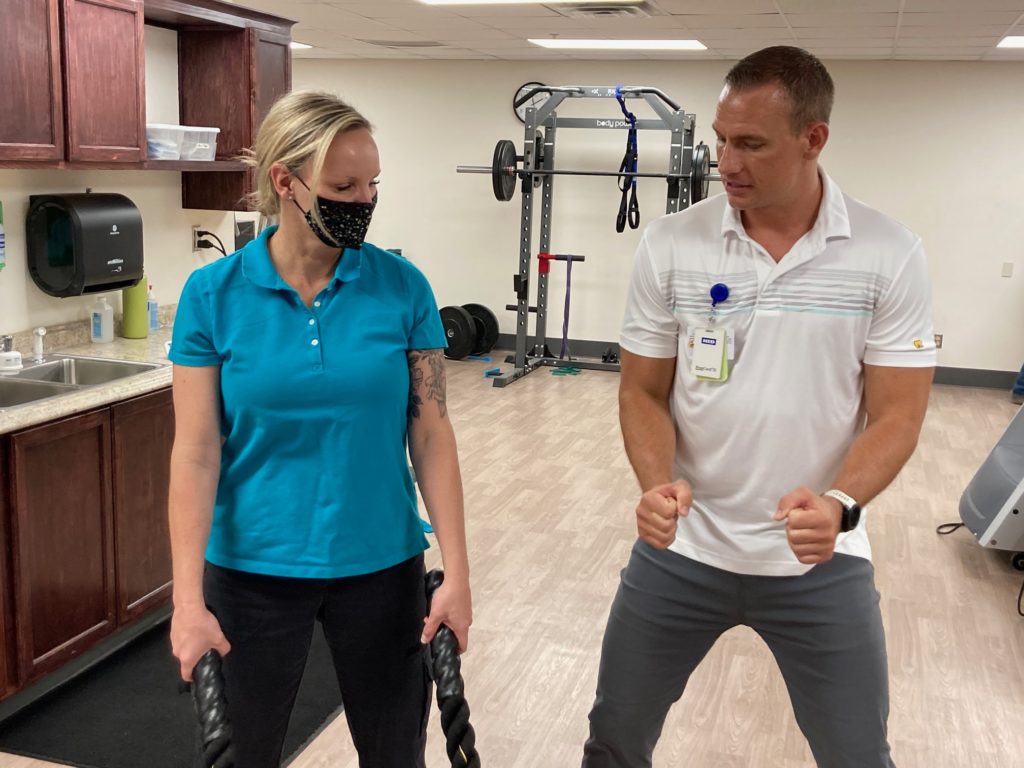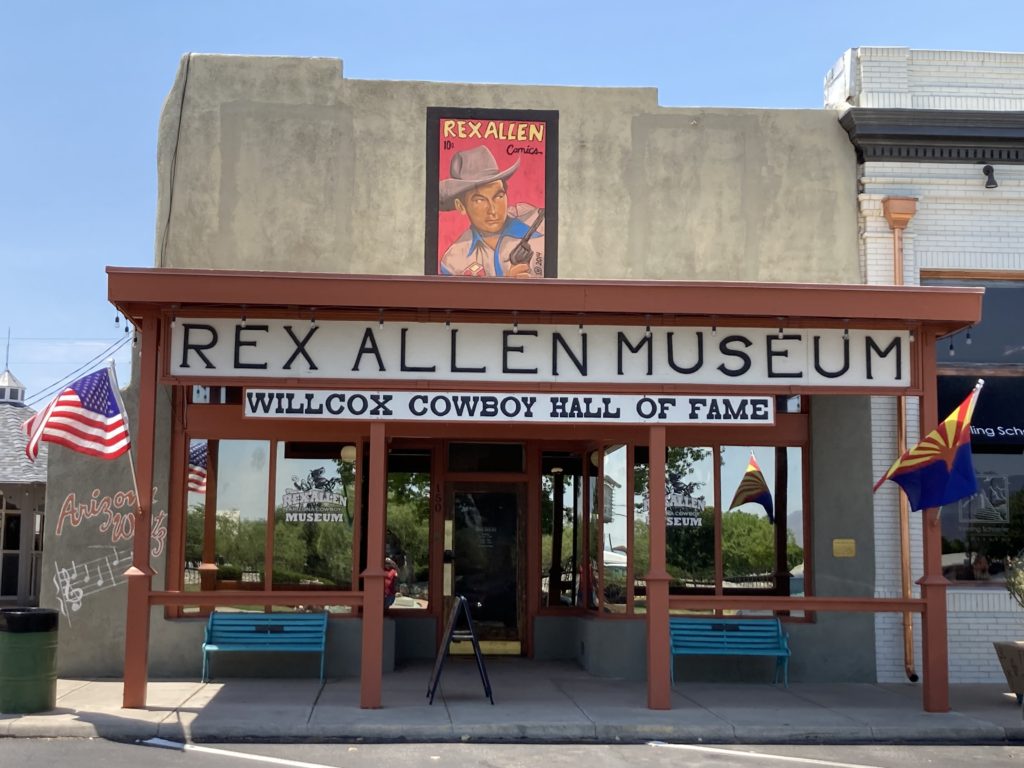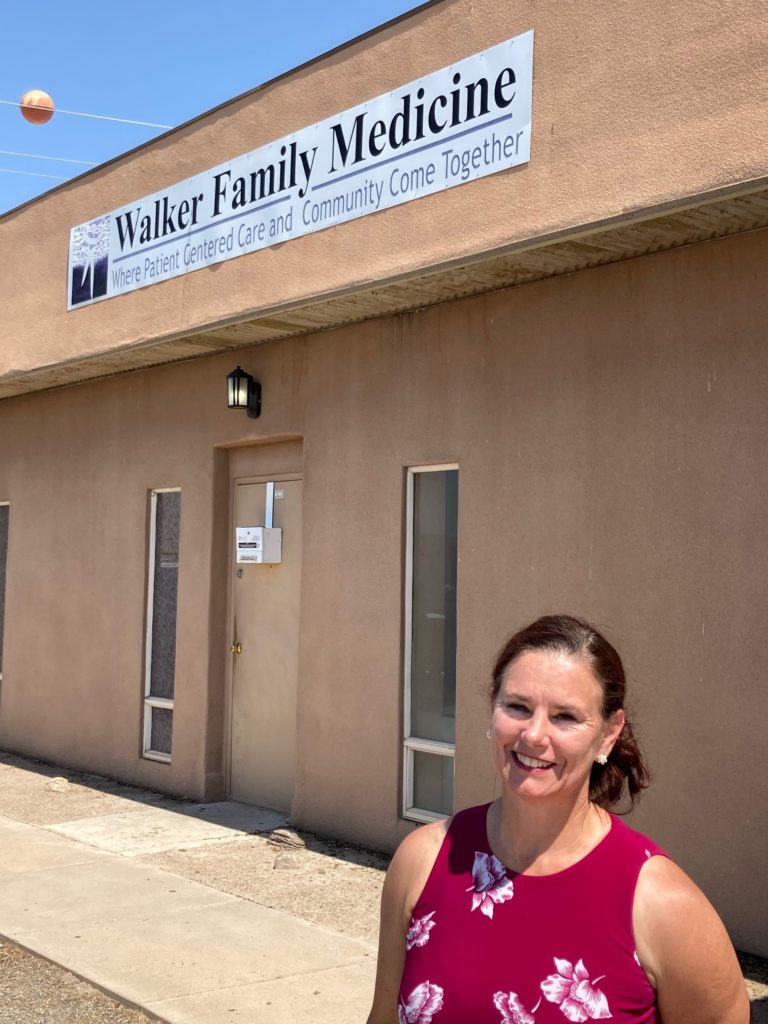
*This article first appeared in the Summer 2021 issue of Arizona Physician magazine, a publication of the Maricopa County Medical Society.
By Brian Powell
Flinn Foundation
When Dr. Dawn Walker first arrived in Willcox, the Doctor of Osteopathic Medicine was one of eight physicians in this rural southeast Arizona town best known for its ranching, farming, and singing cowboy movie star.
About two decades later, the owner of Walker Family Medicine and chief of staff at Northern Cochise Community Hospital is currently the only physician—MD or DO—providing daily primary care services.
Willcox has a 24-bed critical access hospital with emergency services, and nurse practitioners serve at both Walker’s office and the two rural health clinics operated by the hospital. Chiricahua Community Health Centers, a nonprofit federally qualified health center, provides preventative and primary care services in the area a couple of days a week through a mobile unit.
But since April, the hospital’s two rural health clinics that primarily provide primary care services—Sulphur Springs Medical Center in Willcox and Sunsites Medical Clinic in Pearce, about 30 miles to the southwest— have been without a physician, highlighting the medical challenges in a rural town.
“It’s difficult, it’s really difficult, to get doctors to come to a rural community where there is typically less funding available and when you are competing against metro areas that have a lot to offer,” said Robin Allen, rural health clinic manager. “Typically, those that do are from the area and want to return home.”
Mo Sheldon, who was named CEO of Northern Cochise Community Hospital last year, says it takes a certain type of person to want to serve as a physician in a small community—someone with a breadth of knowledge and interested in whole-person care who is comfortable being seen around town at the grocery store or the high school football game.
“Anonymity is not something you get in a rural community, but you are well respected and regarded and very much appreciated,” Sheldon said.
Sheldon grew up in the Cochise County city of Sierra Vista and has spent most of her adult life working at rural hospitals in Texas and eastern Washington.
The hiring of a new physician, who has traditionally been an MD, is one piece of the puzzle to provide the necessary services to the people of the hospital district, Sheldon said. In June, the hospital aligned with TMC HealthCare, which is anchored by Tucson Medical Center. And coming up is a critical November election that will go a long way in determining the long-term financial stability of the hospital.
“We exist to serve this community, and I believe a rural hospital has a different relationship with the community,” Sheldon said. “We frequently take care of people we know or have a relationship that is far more personal than you might find in an urban medical center.”

Willcox, Arizona
Willcox is a city of about 4,000 people—or about 15,000 when including the surrounding area—80 miles east of Tucson along Interstate 10. Through the years, the annual Rex Allen Days has been the big draw for the city known as the “Cattle Capital of the World,” celebrating the life of the singing “Arizona Cowboy” who grew up on a ranch outside of Willcox and starred in movies, radio, and television shows.
The surrounding mountain ranges and sandhill cranes draw visitors to the high desert landscape dotted with vineyards, dairies, pecan and pistachio orchards, cotton, and alfalfa.
More than 80% of the grapes used in Arizona wines are grown in the Willcox area. Tasting rooms are opening in the downtown area across from the historic railroad park, where trains regularly roll right through a town that has maintained its Western vibe while offering new locales to sip wine and espresso.
Located between the freeway and downtown are the medical services in town—the one-story hospital with its 24-hour emergency room, Sulphur Springs, Walker’s medical office, and the town’s two pharmacies.

Northern Cochise Community Hospital’s roadmap for success
Today, like many rural hospitals, Northern Cochise Community Hospital is relinquishing some of its independence to forge a partnership with a larger health system.
Sheldon said the alignment with TMC, which expands on an existing relationship, will provide additional medical and training resources, improve financial stability, and provide more seamless patient transfers, the majority of which were already going to Tucson Medical Center. The alignment will also help solve the difficulty of a small, independent hospital negotiating favorable equipment pricing and reimbursement rates.
Financial struggles have impacted hospital operations in the past. In 2016, the city’s only long-term care facility—which was housed in a wing of the 1968 brick hospital building—was forced to close.
Yet to reach the desired long-term stability, the alignment with TMC is not enough, Sheldon said. The five-year health care district tax must be renewed in the November election, or the hospital will lose about $2 million annually, Sheldon said.
Chief nursing officer Helen Kilpatrick worked in several Arizona hospitals before accepting her position last year in Willcox, where her family has ranched and farmed since the 1800s.
Kilpatrick provided examples of acute care at the hospital, such as respiratory issues in the elderly, child injuries or illness, care for the area’s migrant farmworkers, and traumas from freeway car accidents. There is no intensive care unit, chemotherapy, or births, except in an emergency, but the hospital does rent space to specialists who typically visit once or twice a month.
The physical and occupational therapists treat hospital patients recovering from surgery, for instance, plus the rehabilitation center serves as an outpatient clinic providing the only in-town option for residents needing physical therapy, rehabilitation manager Welton Wittwer said.
Wittwer, who grew up in rural Wyoming and has worked in big cities and small towns, said he enjoys the amount of time he can spend with each patient, sometimes 45 minutes to an hour one-on-one, which is rare in urban areas.
“We hear from patients, ‘We are so glad you are here,’ and we have a great rapport with the community,” Wittwer said.
But as with physicians, recruitment can be tough. For instance, the center has had a vacant speech therapist position for an extended time, Wittwer said.

Dr. Walker: The town doctor
Dawn Walker, DO grew up in Tucson but acknowledges she never heard of Willcox until meeting her college roommate—a Willcox resident—at Northern Arizona University.
Years later, when she had the opportunity to move her young family to Willcox, she took it with the blessing of her husband, a fourth-generation Arizonan who was comfortable with small-town life. That was the summer of 1999.
Her practice, Walker Family Medicine, takes appointments as well as same-day walk-ins and can treat injuries or conduct rapid testing commonly seen in urgent care facilities in larger cities. In addition to Walker, three nurse practitioners see patients, who range from infants to seniors.
In addition to primary and preventative care, Walker is an advocate for more local psychiatry services and was the co-founder of the Willcox Meth Task Force in 2006. As patients have become more comfortable with telemedicine and telehealth, and with the approval of new state legislation, Walker said she is pleased with the opportunities Willcox residents will have, including enhanced opportunities for counseling sessions.
Last year, Walker was appointed by Gov. Doug Ducey to a five-year term on the Arizona Board of Osteopathic Examiners in Medicine and Surgery. The board licenses and regulates more than 3,000 doctors of osteopathic medicine and regulates about 400 osteopathic interns and residents receiving post-graduate training in Arizona hospitals and clinics, according to the board’s description.
“My hope is to make us a stronger medical community in Willcox by bringing back what I learn and making us more aware of the regulatory information,” Walker said.
A small-town hospital’s big impact
As new residents began moving to Willcox during the COVID-19 pandemic, Walker said the hospital’s presence was important to some. But for others, it was not on their radar.
Yet without the hospital, jobs would be eliminated, and some residents would think twice about relocating or opening a business—or possibly staying and aging in their hometown.
“Economically we are critical to the survival of a community,” Sheldon said. “If you look at some communities that have lost their hospitals, you will find more bare storefronts than you do here.”
Mary Peterson, the Willcox Chamber of Commerce and Agriculture board president and co-owner of vin·tage and Bear’s Vintage Thrift in downtown Willcox, said having a hospital in town attracts people and businesses to Willcox, plus it makes people feel safe.
“This community is lucky to have a hospital, and we should do everything we can to support it and help it thrive,” Peterson said.
Read more:
Arizona medical schools lead the way in diversifying physician workforce (Arizona Physician/Spring 2021)
Preparing for COVID-19 during flu season (Arizona Physician/Summer 2020)
TGen’s online MindCrowd research project aims to provide a personalized guide for successful brain aging (Arizona Physician Spring/2020)